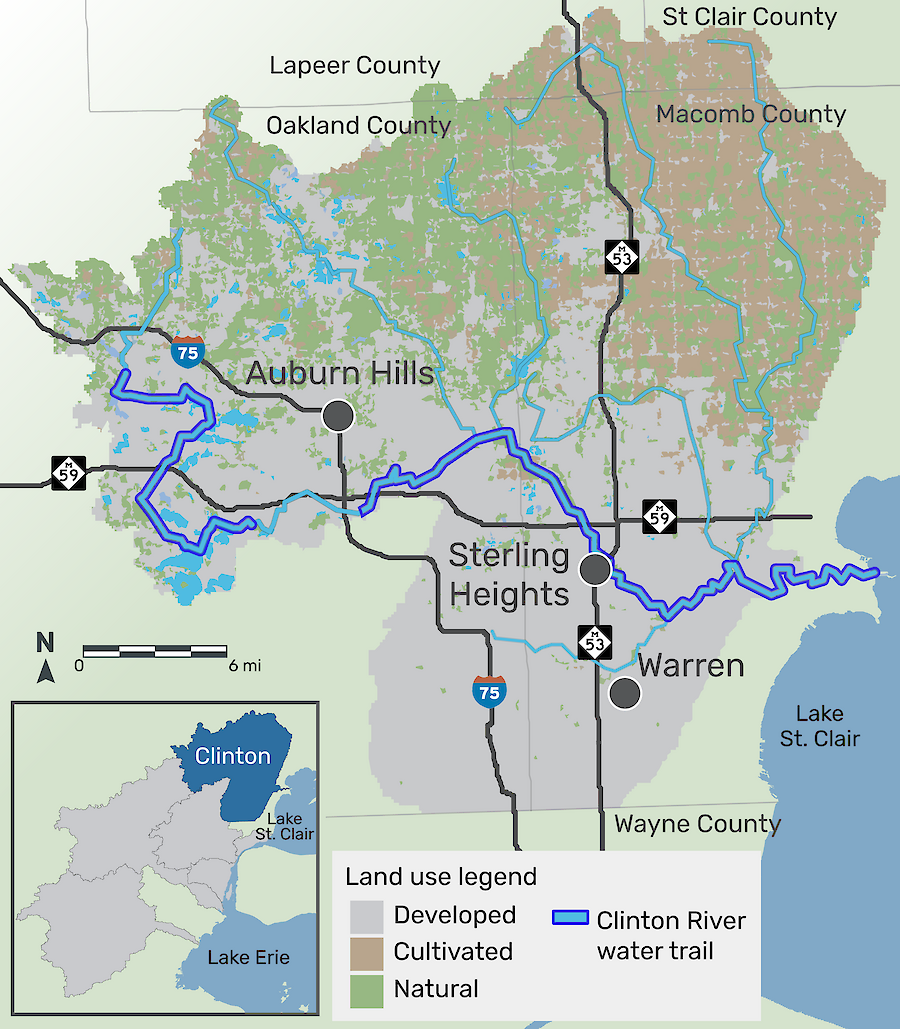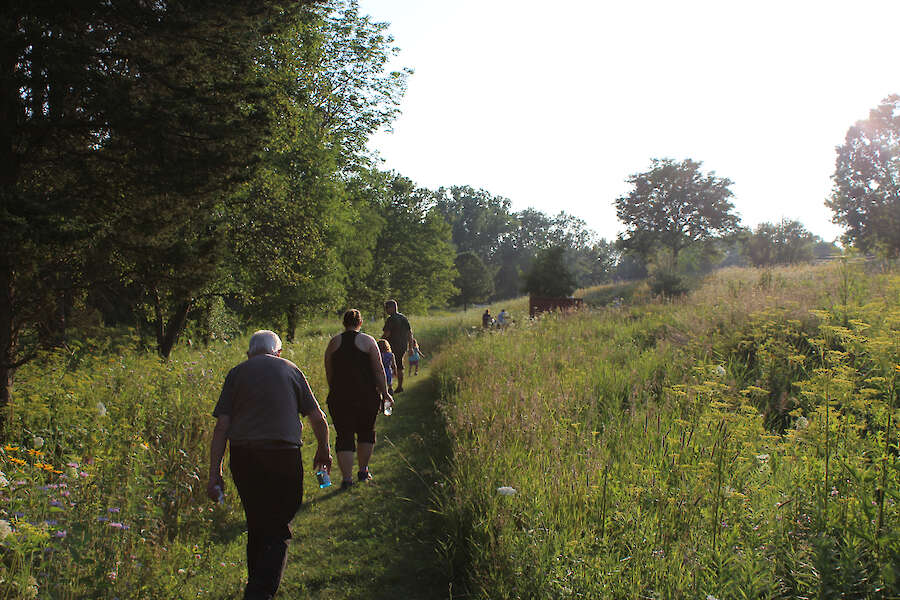 The Clinton River Watershed is part of the Great Lakes Basin, one of the largest freshwater ecosystems in the world. It is the most populous watershed in Michigan, spanning 760 square miles over five counties: Oakland, Macomb, Lapeer, St. Clair, and Wayne. Historically, this region was home to the Odawa, Ojibwe, Potawatomi, and Wyandot peoples. The headwaters of the Clinton River’s Main Branch begin in northwestern Oakland County and merge with two major tributaries, Stony Creek and Paint Creek. A favorite for trout anglers, Paint Creek is the only remaining designated coldwater trout stream in Southeast Michigan.
The Clinton River Watershed is part of the Great Lakes Basin, one of the largest freshwater ecosystems in the world. It is the most populous watershed in Michigan, spanning 760 square miles over five counties: Oakland, Macomb, Lapeer, St. Clair, and Wayne. Historically, this region was home to the Odawa, Ojibwe, Potawatomi, and Wyandot peoples. The headwaters of the Clinton River’s Main Branch begin in northwestern Oakland County and merge with two major tributaries, Stony Creek and Paint Creek. A favorite for trout anglers, Paint Creek is the only remaining designated coldwater trout stream in Southeast Michigan.
The Middle and North Branches of the Clinton River begin in rural areas of Lapeer and Macomb Counties and flow south to merge into the Main Branch in Clinton Township. The Main Branch travels 81.5 miles through marsh, forest, farmland, suburbs, and cities, meeting with Lake St. Clair in Harrison Township. Lake St. Clair is the 15th largest lake in the United States and is referred to as the 6th Great Lake. The Clinton River and Lake St. Clair together are drivers of outdoor recreation and tourism, provide critical fish and wildlife habitat, support local businesses, and provide people with important connections to nature. The upper watershed is less developed and provides more access to nature.
While the Clinton River is now known for its fish and wildlife habitats and recreational opportunities, this wasn’t always the case. Rapid development and urbanization in the first half of the 20th century, along with a lack of clean water regulations, resulted in heavy pollution and contamination from point and nonpoint sources. In the 1960s, the Michigan Department of Natural Resources conducted a fish survey and found no living fish from Lake St. Clair to the City of Pontiac. The Clean Water Act of 1972 helped improve water quality, but the watershed continued to suffer from legacy pollution. In 1987, the Clinton River watershed was identified as an Area of Concern (AOC) under the Great Lakes Water Quality Agreement with eight beneficial use impairments, seven of which are still being addressed.
Moving Forward in a Changing World
 The Clinton River watershed is vital to the prosperity of southeast Michigan. It provides water for agriculture, small businesses, and industry, habitat for wildlife, and recreation opportunities for residents. Nearby Lake St. Clair draws over 17 million visitors a year to its freshwater coastline. The Clinton River also faces challenges tied to development and the increased impacts of a changing climate.
The Clinton River watershed is vital to the prosperity of southeast Michigan. It provides water for agriculture, small businesses, and industry, habitat for wildlife, and recreation opportunities for residents. Nearby Lake St. Clair draws over 17 million visitors a year to its freshwater coastline. The Clinton River also faces challenges tied to development and the increased impacts of a changing climate.
This report card outlines the current status of the river and its watershed, and the grades reflect historical and ongoing demands on natural resources. The Clinton River Watershed Council, businesses, residents, and local and county governments are actively facing these challenges. Their work in water quality monitoring, ecosystem restoration, and green stormwater infrastructure solutions is invaluable to the current and future health of the Clinton River and its watershed. Much work remains, and CRWC’s commitment to building strong partnerships will continue as a driving force in creating a healthier watershed for the residents of SE Michigan.
